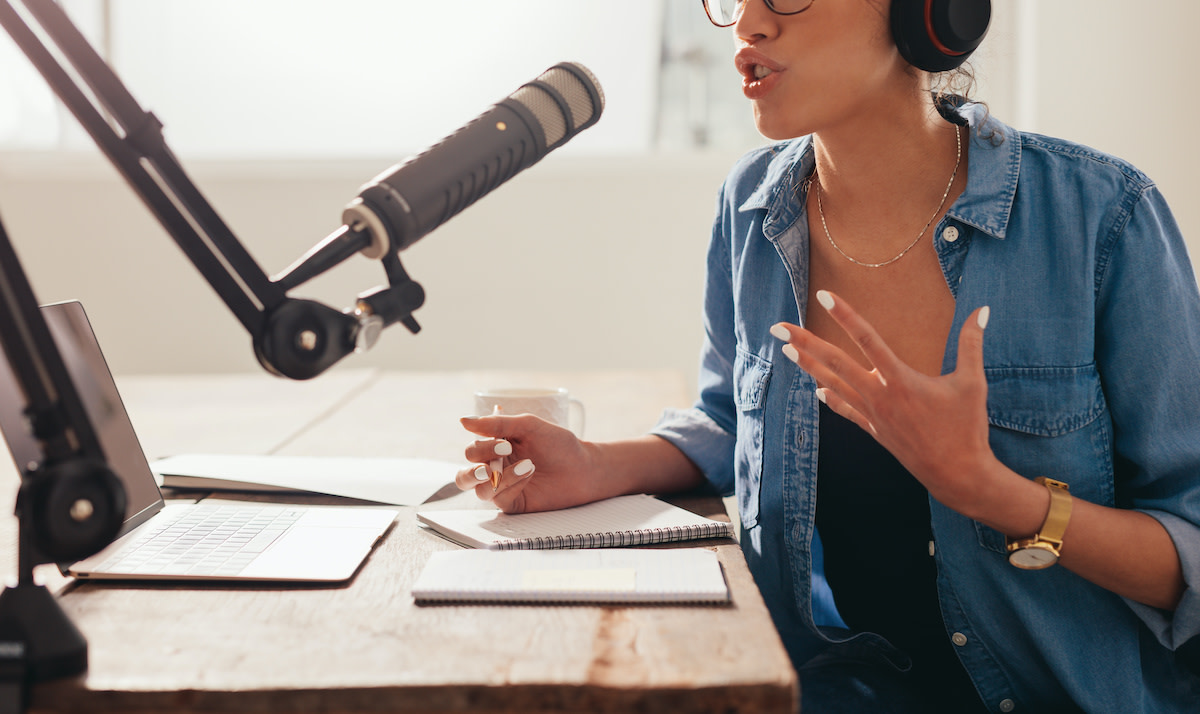How to Record a Podcast Remotely: Tips for Remote Recording
Written by MasterClass
Last updated: Sep 8, 2021 • 2 min read
Remote podcast recording gives you and your podcast guests the freedom to record at any time from anywhere. However, recording podcasts remotely presents a unique set of challenges, from recording separate audio tracks to ensuring a strong Internet connection to getting high-quality audio.
Learn From the Best
What Is a Podcast?
A podcast is a collection or series of digital audio files that are made available for downloading or listening via the Internet. Each individual audio recording is known as a podcast episode. Podcasts are typically hosted by an individual or individuals who lead a conversation, share stories, or report the news. The creator of a podcast is known as a podcaster. Podcasts are hosted on streaming applications such as Spotify, Stitcher, iTunes, Google Podcasts, and Apple Podcasts (the podcast app that comes with iOS).
The history of podcasting began with the creation of the iPod. In fact, the word "podcast" is a portmanteau—a combination of the word "iPod" and "broadcast."
How to Record a Podcast Remotely
Consider these podcasting tips to help overcome remote recording hurdles and achieve high sound quality.
- 1. Assemble the right equipment. Having studio-quality equipment is key to getting the highest quality audio possible. Ask your guests if they have access to a USB microphone, earbuds, or headphones, and a pop filter (a piece of foam or cloth that acts as a buffer for a USB mic). If not, consider sending them the equipment.
- 2. Choose a quiet, distraction-free environment. Background noise is the bane of audio recording as it is difficult to edit out in post-production. While it can be challenging to find a space with little to no background noise, planning ahead will help minimize noise and improve the production quality of your podcast. Instruct your interviewee or fellow podcast host to turn off any fans in the room and silence their phone for the duration of the recording session.
- 3. Use double-ender recording techniques. Double-ender recording refers to the process of having all parties involved in the remote podcast interview record each end of the audio locally on their device. Local recording ensures that you have separate tracks saved in various locations. When the interview is finished, have your guests send you their audio files and stitch the two together with editing software. This will require your guests to record audio with podcast recording software such as Audacity.
- 4. Use remote recording software. Remote recording software is designed specifically to work with video conferencing programs such as Zoom or Skype. The features will vary depending on which software program you use, but most allow you to view the strength of your guest’s Wi-Fi connection, share time-zone information, and use cloud-based backup systems that save audio and video files.
- 5. Edit your recording. Use audio editing software to splice together the conversation, removing any parts of the recording you wish to omit and adding music if needed. If you plan to publish your video call, consider using video editing software to clean up your video call recording. Most video call recorders will provide you with a raw .wav file that you can edit in post. Video podcast editing could include trimming clips, adding captions, and adjusting the picture quality to meet your preferences.
Learn More
Get the MasterClass Annual Membership for exclusive access to video lessons taught by the world’s best, including LeVar Burton, Samuel L. Jackson, Nancy Cartwright, Issa Rae, Steve Martin, and more.
